Energy and Thermal properties
The need for sustainable energy sources capable of meeting the ever-increasing energy demands of our world has spurred the development of energy-harvesting technologies such as piezoelectrics and triboelectrics. Piezoelectric polymers are promising energy materials for wearable and implantable applications for replacing bulky batteries in small and flexible electronics. Therefore, one of our research studies is focused on understanding the behavior of polymers at a molecular level and designing new polymer-based generators using for example polyvinylidene fluoride (PVDF) and many other polymers including conductive polymers. Within our research, we show the importance of manufacturing settings and their impact on desired properties of fibers in electrospinning which can be applied in energy harvesting devices and beyond.
Publications to follow up:
https://pubs.acs.org/doi/abs/10.1021/acsami.0c02578
https://pubs.acs.org/doi/abs/10.1021/acsami.1c00983
https://www.sciencedirect.com/science/article/pii/S2211285518309376
Media:
https://erc.europa.eu/news-events/magazine/erc-starting-grant-2020-examples
https://cordis.europa.eu/project/id/948840
https://naukawpolsce.pap.pl/aktualnosci/news%2C83824%2Cpiora-pingwinow-i-siersc-niedzwiedzi-inspiracja-w-pracach-nad-nowymi
https://krakow.wyborcza.pl/krakow/7,44425,26265312,pierwszy-prestizowy-grant-erc-dla-agh-1-7-mln-euro-na-badania.html?disableRedirects=true
https://www.transfer.edu.pl/pl/aktualnosci-rpk,157,granty-erc-spelniaja-marzenia-naukowe,1621.chtm
https://www.materialstoday.com/biomaterials/news/connected-pores-keep-polar-bears-and-penguins-warm

Related projects:
– ERC-2020-STG project entitled: Bioinspired Composites Strategies for Saving Energy (BioCom4SavEn), 5 years, started 1-01-2021


Related projects:
– Bioinspired design of nanofibres network for water and energy (No 2015/18/E/ST5/00230), 5 years, started 1-09-2016, National Science Centre in Poland, Sonat Bis 5 https://projekty.ncn.gov.pl/index.php?projekt_id=300939
Wetting properties and water harvesting
Water resources are shrinking year by year, and fog water collectors (FWCs) are already being used in humid regions, where populations have limited access to traditional water resources. This study aims to use electrospun fibers as FWCs to collect water. In our studies, we often combine hydrophobic and hydrophilic polymer fibers to develop a more effective system for fog collection under controlled laboratory conditions. Our research indicated based on many examples that meshes from electrospun fibers are a robust and highly efficient system for water harvesting applications.
Publications to follow up:
https://pubs.acs.org/doi/abs/10.1021/acsnano.1c01437
https://pubs.acs.org/doi/abs/10.1021/acsami.9b19839
https://pubs.acs.org/doi/abs/10.1021/acssuschemeng.0c06480
https://pubs.rsc.org/en/content/articlehtml/2020/ra/d0ra03939j
https://pubs.rsc.org/en/content/articlehtml/2021/ra/d1ra00749a
Media:
https://plus.gazetakrakowska.pl/pani-doktor-ktora-lapie-wode-z-mgly/ar/11560434
https://www.polskieradio.pl/23/272/Artykul/1696897,Projekt-badaczki-z-AGH-moze-pomoc-w-walce-z-niedoborem-wody
https://www.youtube.com/watch?v=o0b2EkD1hJ8
https://www.economist.com/science-and-technology/2021/05/26/a-better-fog-trap
Cell – material interaction
The topography of the scaffold and the surface properties are the key elements to enhance cell attachment and anchoring to electrospun fibers, which eventually control further tissue development. Electrospinning is an innovative and facile way of fibrous membranes that can regulate the interfacial properties to enhance cell adhesion and filopodia formation on fibrous tissue scaffolds for possible bone regeneration. Through advanced microscopy techniques such as high‐resolution scanning electron microscopy, Kelvin probe force microscopy, and confocal microscopy we investigate the interactions between cells and fibrous scaffolds for biomaterials used in regenerative medicine.
Publications to follow up:
https://www.frontiersin.org/articles/10.3389/fbioe.2021.632029/full
https://www.sciencedirect.com/science/article/abs/pii/S0169433221000593
https://www.mdpi.com/1996-1944/13/8/1974
https://www.sciencedirect.com/science/article/pii/S0264127520304494
Media:
https://naukawpolsce.pap.pl/aktualnosci/news%2C412020%2Cwlokna-ciensze-od-wlosa-pomoga-wyleczyc-ubytki-kosci.html
https://www.radiokrakow.pl/audycje/pracuja-na-nobla/odtwarzanie-tkanki-na-nanowloknach/

Related project:
– Cell responses to electrospun polymer fibers with controlled surface potential, conductivity and stiffness for tissue engineering applications (No 2019/33/B/ST5/01311), 3 years, started 05-02-2020, National Science Centre in Poland, OPUS 17
– Poland – China (NAWA), AGH University and Donghua University exchange program within the project entitles: Electrospun cellulose acetate 3D nanofiber scaffold for bone-cartilage tissue regeneration, 2 years, started 1-02-2021
– 3D analysis of cell responses to piezoelectric and charge induced polymer nanofibres scaffolds (No 2014/15/D/ST5/02598), 3 years, started 1-07-2015, National Science Centre in Poland, Sonata 8;
– Investigation of Regenerative Effects of CRISPR / Cas9 Functionalized Piezoelectric Nerve Conduits on in vitro and in vivo Spinal Cord Injury Models – PIECRISCI (2021/03/Y/ST5/00231), National Science Centre in Poland, M – ERA NET 3, 3 years, started at 1-07-2022 funding from the European Union’s Horizon 2020 research and innovation programme under grant agreement No 958174


Related projects:
– Nanofiber based sponges for atopic skin treatment, (First TEAM/2017-4/41), 5 years, started 1-10-2018, Foundation for Polish Science, Frist Team

Skin patches
Atopic dermatitis (eczema), one of the most common diseases and also most difficult to treat, is seeking novel development not only in medicine but also in bioengineering. Moisturization is the key in eczema treatment as dry skin triggers inflammation that damages the skin barrier. Within our research, we design the electrospun patches from various polymers, including hydrophobic and hydrophilic, micro and nanofibers combinations with oils, to obtain long-term skin hydration. The patches based on electrospun polymer fibers have great potential to be deployed as a biomaterial in medical applications, such as topical treatments for chronic skin conditions.
Website: http://nano4skin.agh.edu.pl/
Publications to follow up:
https://www.sciencedirect.com/science/article/abs/pii/S0927776520309115
https://pubs.acs.org/doi/abs/10.1021/acsabm.0c00854
https://www.mdpi.com/2077-0375/11/1/26
Media:
https://www.fnp.org.pl/assets/Urszula-Stachewicz_opis-1.pdf
https://www.agh.edu.pl/osiagniecia/info/article/dr-hab-inz-urszula-stachewicz-zrealizuje-projekt-badawczy-w-ramach-programu-first-team/
Electrospinning
Electrospinning is one of the most important methods used for the production of nanostructured materials. Electrospun nanofibers are used in a wide spectrum of applications such as drug delivery systems, filtration, fog harvesting, tissue engineering, smart textiles, flexible electronics, and more. Processing parameters in electrospinning allow us to control the properties of fibers on a molecular level and are able to tailor them for specific applications. The examples are relative humidity and voltage polarities that were widely studied in our group in terms of mechanical and surface properties of electrospun polymer fibers.
Publications to follow up:
https://www.mdpi.com/1996-1944/13/18/4169
https://www.sciencedirect.com/science/article/abs/pii/S0001868620305844
https://www.mdpi.com/2073-4360/11/1/34
https://www.mdpi.com/2079-6439/8/10/65


Natural Materials
Nature is an amazing source of inspiration, one of them is thermal insulation structures, such as penguin feathers and polar bear hair. These keratin-based materials are combing the fibers and porosity to obtain the desire thermal and mechanical properties. Apart of keratin, collagen is one of the most versatile proteins in tissues of living organisms that comes in many shapes and sizes, providing functions ranging from tissue matrix through, ligament formation up to enabling mineralization in teeth. For example, collagen type I is present in crocodile skin and teeth, showing the flexibility in naturally constructed tissues to obtain various functions. In the studies of natural materials, we use advanced microscopy techniques for high resolutions images and 3D reconstructions based on the scanning electron microscope (SEM) and focused ion beam (FIB) techniques. The microscopy investigations reveal many similarities in the structure of natural materials being a key in constructing novel materials.
Publications to follow up:
https://www.sciencedirect.com/science/article/abs/pii/S1742706119302740
https://link.springer.com/article/10.1007/s42235-020-0059-7
https://www.sciencedirect.com/science/article/pii/S0968432820301621
https://www.sciencedirect.com/science/article/abs/pii/S0167577X18313831
